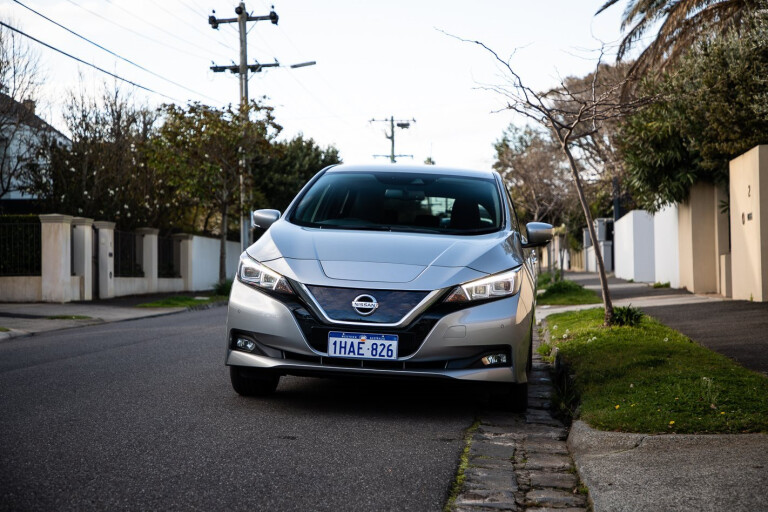
Despite a year in which everyone is focusing on other matters, the electric vehicle movement continues to gain traction. Like it or not – car manufacturers are readying-up electron-powered vehicles at an exponential rate and one such example of EV motoring for the masses is the Nissan Leaf.
What is the Nissan Leaf?
The Nissan Leaf small electric hatchback is one of the most popular electric vehicles in the world, having notched up nearly half a million sales worldwide since the car’s first generation went on sale 10 years ago.

It’s also one of the most affordable electric cars you can own, among competition including the $59,990 Hyundai Kona Electric, $48,970 Hyundai Ioniq, $54,800 Mini Cooper SE and the now-discontinued Renault Zoe.
The Nissan Leaf’s 40kWh battery provides 270 kilometres of range, which is further than rivals like the Mini Cooper SE and Hyundai Ioniq will travel between charges; roughly 230km for both.
The Nissan Leaf features four doors and a boot, has five seats and no internal combustion engine.
That means there’s no saving you once you’ve run through its 270-kilometre range; you’ll have to somehow get it to a charging station or carry an extremely long extension cord.

Price and value
For now, there’s only one model variant available for the Nissan Leaf ‘range’ in Australia, in a single 40kWh capacity.
The Leaf costs $49,990 before on-road costs – undeniably expensive for what is in reality a Nissan hatchback – but the good news is that it’s packed with standard equipment and the only extra cost is metallic or two-tone paint.
Standard kit includes LED headlights, heated front and rear seats, privacy glass, power-folding mirrors, Android Auto and Apple CarPlay connectivity, satellite navigation, heated steering wheel, adaptive cruise control, and a 360-degree parking camera.
Nissan also provides forward-thinking semi-autonomous driving tech in the Leaf, with its suite of Propilot safety tech including autonomous emergency braking, lane-keep assist, blind-spot monitoring, rear cross-traffic alert and active cruise control.
The Nissan Leaf is powered by a 40kWh battery-powered motor which sends 110kW/320Nm to the front wheels, and it can run from zero to 100km/h in 7.9 seconds.
Nissan says it takes almost a full day to charge using a standard AC power point, though it’s closer to 17 hours, in our experience.

You can charge it faster using a DC fast charging outlet which is commonly found near shopping centres in larger cities – that should charge it to near-full in 30-60 minutes.
The standard Leaf will be joined by a long-range Nissan Leaf e+ variant in early 2021. That car will get a larger 62kWh battery with an estimated 370-kilometre range, though will cost nearly $10,000 more.
Living with the Nissan Leaf
WhichCar has been running a Nissan Leaf as a long-termer since August and has considerable experience in what it’s like to live with the Leaf.
Being a pioneer of something new like an electric vehicle is exciting, though once you’re over the honeymoon phase of instant acceleration, emissions-free motoring and fewer visits to the petrol station – the Leaf does blend into being any other car.
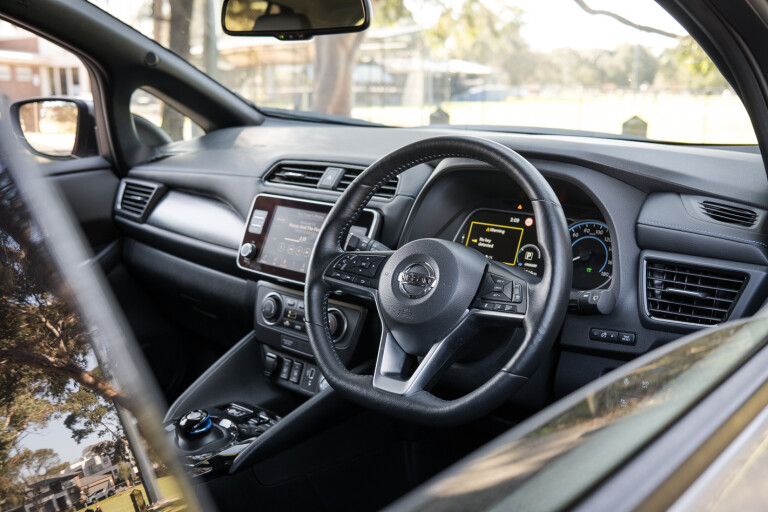
Nissan has done its best to throw in some extra add-ons like heated seats and steering wheel, a Bose premium sound system and keyless entry, but the level of fit and finish is below its $50,000 price point.
Hard dash plastics, a compromised seating position, and a non-reach adjustable steering wheel isn’t the nicest way to spend $50,000, and you have to keep reminding yourself that the premium you’re paying for is the drivetrain technology.
That said, it’s a comfortable car to travel in with extremely plush front and rear seats, convenient get-in-and-go tech like keyless entry, instant-on electric motor and zippy acceleration.
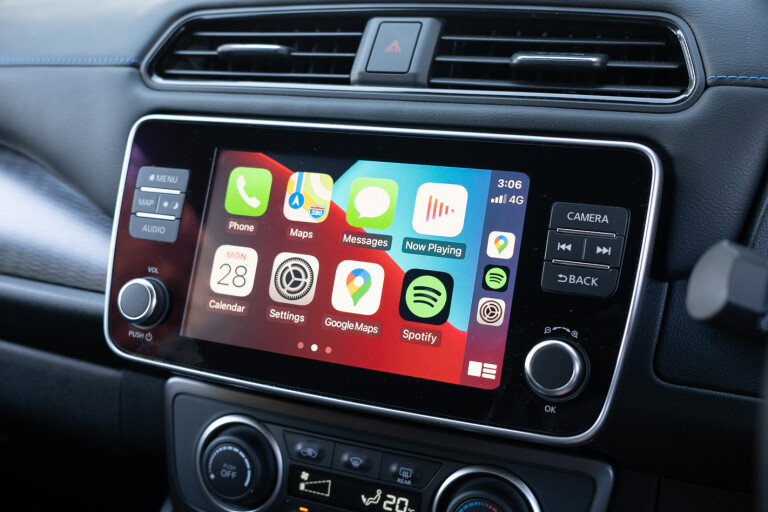
It’s one of the easier cars to roam about a city in, the small body proving easy to park with a wide array of parking sensors and cameras helping you avoid mishaps.
The Leaf also caters well storage-wise, with a large 405-litre boot which expands to 1176 litres with seats down, and numerous cubbies for loose items in the front row.
Nissan's infotainment system is simple to connect to with either Bluetooth or wired Apple CarPlay/Android Auto smartphone mirroring, the maps are clear, the screens are attractive and the connectivity is all very intuitive.
Driving the Nissan Leaf
While no one would call the Nissan Leaf a hot hatch, its instantaneous acceleration and eager nature can be pretty fun.
Those characteristics are best deployed around town and in traffic, where it also receives the benefit of brake force regeneration from the stop/start dynamic of traffic.
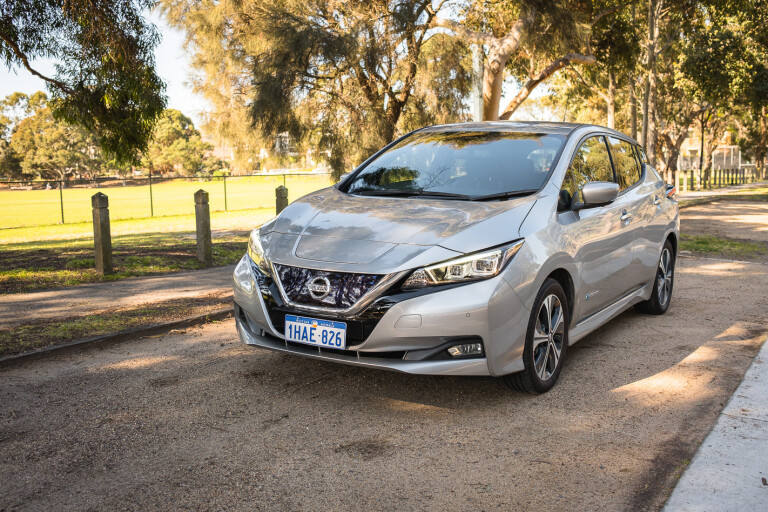
Take it further afield and its 1594kg heft starts to become more apparent around corners, and its torque steer can catch you off-guard when accelerating away.
Wheelspin needs to be managed with careful throttle inputs – especially in the wet.
The ride profile is generally comfortable, upset only when driving over sharper bumps which, on occasion, reverberate around the cabin.
Even without an engine muffling out wind and road noise, the Leaf is quiet inside for anything up to freeway speeds.
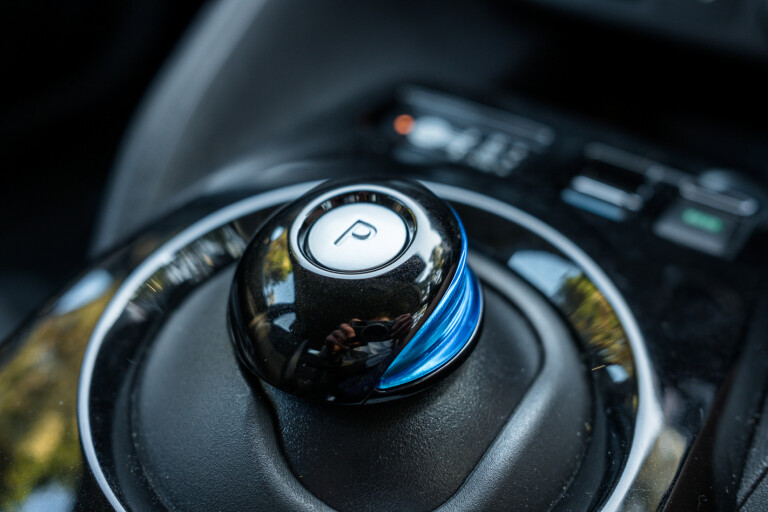
The Leaf employs a regenerative braking system that can apply the brakes whenever you roll off the throttle to convert kinetic energy into electricity.
This is a smart and useful way to drive the car which also gives you a longer driving range.
Safety
The Nissan Leaf scored 93 per cent in ANCAP’s adult occupant protection test, 85 percent for child occupant protection, and 71 percent in the vulnerable road user protection test for an overall score of five stars out of five.
It also offers a well-calibrated autonomous emergency braking system that won’t arbitrarily go off when passing parked cars, and combines with other safety features like the lane-keep assist, blind-spot monitoring and rear cross-traffic alert to keep you safe.
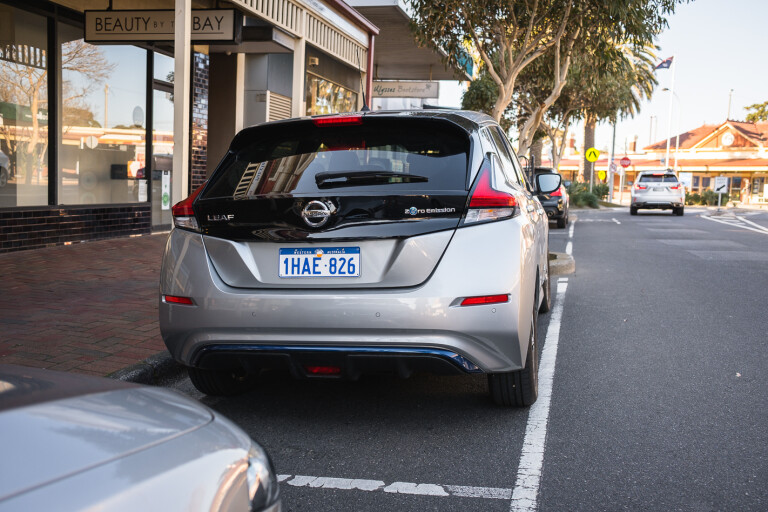
How much does it cost to run a Nissan Leaf?
The great thing about an EV is that it shouldn’t cost you too much to run.
At a rough electricity cost of $0.28 per kWh, the Leaf should only cost around $10 to charge to capacity, and there are no consumables like oil to replace.
Nissan provides a five-year/unlimited-kilometre warranty for the car and an eight-year/160,000km warranty for the battery that protects against loss of charge.
Under Nissan’s capped price servicing program, the first year of servicing will cost $237, the next will cost $317 and the third year will cost $247.
How the judges rated the Nissan Leaf at COTY
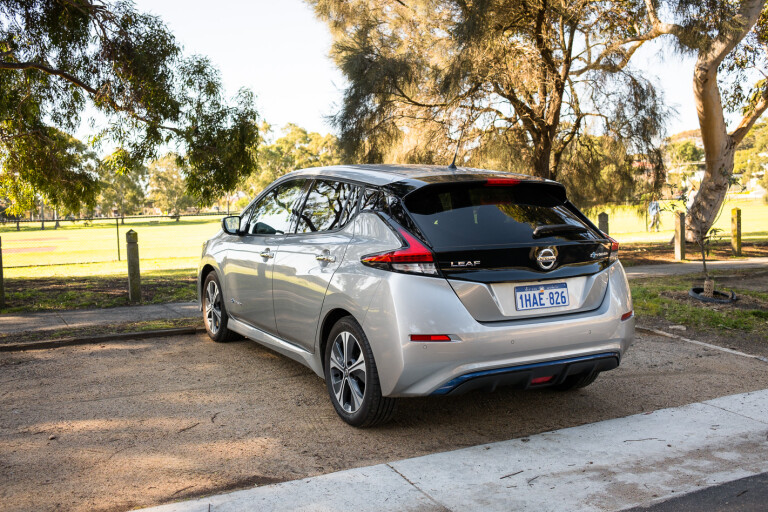
Verdict
There’s little doubt that you have to be a little out-there to buy an electric vehicle right now in Australia.
But where it's a compromise for some, others view it as forward-thinking and a necessary switch for our future.
If you’re one to get ahead of the curve, the Nissan Leaf is the perfect gateway drug into the world of EV motoring.
Rating 4/5
What you will like
Comfortable seats and ride, zippy acceleration, never visiting a petrol station again
What you won’t
Low-rent materials, wheelspin
COMMENTS